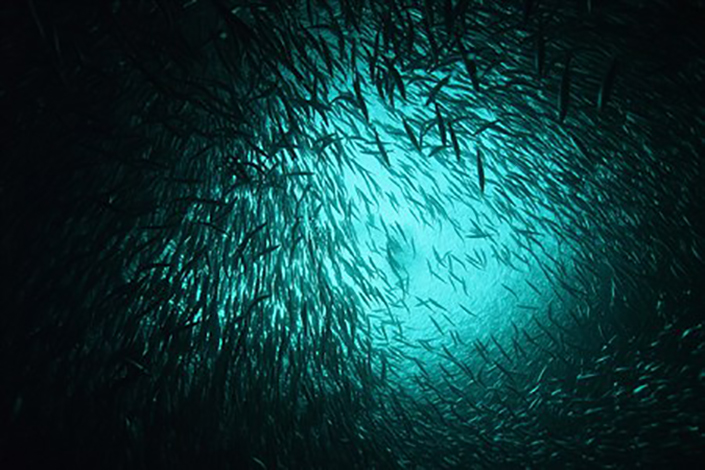Herring populations, while similar genetically, differ on when to spawn

Image: College of Veterinary Medicine & Biomedical Sciences
While herring populations found throughout the Atlantic Ocean are similar genetically, they differ on when they choose to spawn, according to a new international study led by a faculty-researcher in Texas A&M University’s College of Veterinary Medicine & Biomedical Sciences.
Published in the Proceedings of the National Academy of Sciences, the study has significant implications for how climate change may affect the reproduction of herring and other fish.
Leif Andersson, a professor in the Department of Veterinary Integrative Biosciences at Texas A&M, led the international study. Andersson is also a professor at Uppsala University and the Swedish University of Agricultural Sciences.
Scientists in Sweden and Canada studied the genetic basis of reproduction in 25 populations of herring from both sides of the North Atlantic. They revealed that a number of genes associated with the timing of reproduction, and the genetic variants associated with spring or autumn spawning, are largely shared between geographically distant populations.
“We now have a long list of genes associated with timing of reproduction in the herring, and there are some that appear particularly important,” Andersson said. “Animals need to breed at the time of year when their progeny have the best chance of survival.”
The Atlantic herring is one of the most abundant fish in the world and has been a crucial food resource in Northern Europe. The fish spawn in the spring, summer, or autumn. Which strategy is the most successful varies from year to year and over time periods due to climate conditions that affect plankton production.
The new study provides several interesting results, said Sangeet Lamichhaney, former doctoral student at Uppsala University and shared first author on the paper.
“Firstly, we have revealed that herring populations across the entire Atlantic Ocean are remarkably similar genetically, suggesting that there is gene flow between herring populations,” Lamichhaney said. “Despite this, we identified clear genetic differences between spring and autumn spawning populations. Furthermore, the genetic factors associated with spawning time were to a large extent shared between geographically distant populations.”
Andersson said, “One of the most interesting genes is TSHR (thyroid-stimulating hormone receptor) because previous studies in birds and mammals have indicated that this gene has a key role in how animals time their reproduction in response to changes in day length. The fact that TSHR was the gene that showed the most consistent association with spawning time in the herring suggests that it has a similar role in fish.
“An important topic for future research is to reveal the molecular mechanism of how increasing day length leads to the initiation of spawning in spring spawners, whereas this response is delayed until August or September for autumn spawners,” he said.

